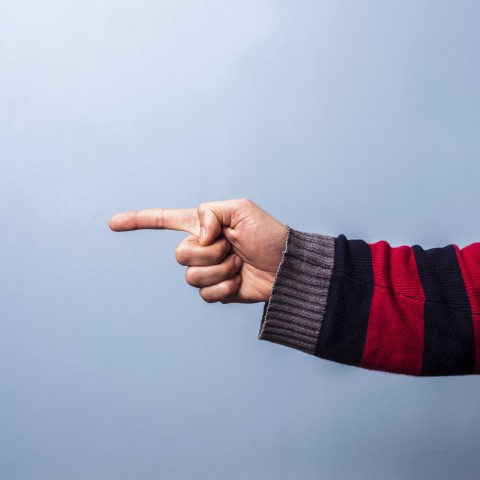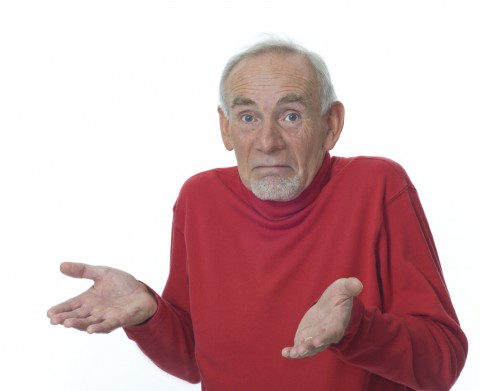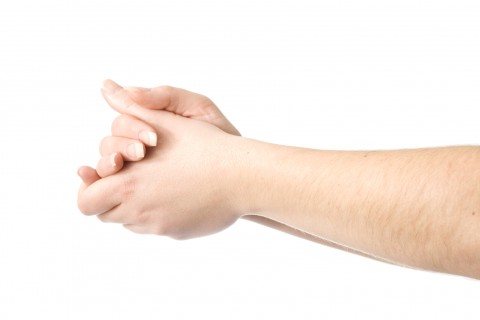
Have you ever traveled to a foreign country with little knowledge of the local language? Yup, most of us have been there…
So what did you do?
Did you stay in your hotel room all day and avoid human interaction? Or did you do your best to communicate with people anyway?
If you chose the latter option, we’re willing to bet that nonverbal communication really came to your rescue.
In this article, we’ll introduce you to the most common Hungarian gestures, body postures, and facial expressions. Study these before your trip to Hungary so that you can better understand and communicate with the locals, no matter your level of language proficiency.
Of course, we do recommend learning a few basic words and expressions in Hungarian before your trip. Doing so will make your experience even smoother and more enjoyable.
- ➜ Before we begin: Do you know what we call the different parts of the body in Hungarian? This knowledge might be useful as we delve into the most common gestures.

 Table of Contents
Table of Contents
- Greetings
- Body Postures
- Hand Gestures
- Facial Expressions
- Other Physical Movements
- How HungarianPod101.com Can Help You Master Hungarian
1. Greetings
Even though greetings are probably some of the easiest phrases to learn in any language, you can always use the following Hungarian greeting gestures if you’re not sure of yourself or are still a bit shy. However, if you combine them with verbal communication…jackpot!
Biccenteni / To nod
How:
While looking at the other person, make a quick vertical movement with your head that is driven by your chin.
When to use:
This nodding gesture is used to say hello to someone. Keep in mind, however, that it cannot be used for goodbyes.

Puszi / Peck
How:
Move as if you were going to give someone a peck on the cheek, but do not finish it. Just brush your cheek against theirs and make a ‘mwah’ noise.
When to use:
You can use this gesture to greet someone with whom you’re rather close. This gesture can also be used in conjunction with a goodbye phrase.
![People Greeting with the Puszi [Peck] Gesture](https://wordlist.languagepod101.com/wordlist/media/28962&v=medium.jpg)
Integetni / To wave
How:
There are two ways you can do this gesture, depending on the distance between you and the other person.
1) Raise your arm up to about face level and move your hand from right to left slowly.
2) Raise your arm up above your head and wave in a similar fashion.
Keep in mind that the second option should only be used if the person is rather far away.
When to use:
While waving in Hungary is quite common, it should be reserved for when you see someone you know from a fair distance away and would like to greet them.

Ölelés / Hug
How:
There are two ways to do this gesture.
1) Put one arm across the other person’s shoulder in the back. Then, wrap your other arm under their armpit so that your hands meet and touch each other at the back.
2) Wrap each arm under each of the person’s armpits and place your hands on their back.
When to use:
A hug is a versatile type of nonverbal communication in Hungary that can mean lots of things. It can be used for greetings, but only with very close friends and family members.

2. Body Postures
Your body language can say a lot about you, or—if interpreted the wrong way—can cause serious trouble. You can avoid plenty of awkward (or dangerous) situations by learning Hungarian body language signals before your visit.
Below, you’ll find four body postures common in Hungary that you should take into consideration when talking with Hungarians.
Keresztbe tett kéz / Crossed arms
How:
Cross your arms in front of your torso with only one hand (or no hands) showing.
When to use:
This Hungarian body gesture is typically used unconsciously. That said, this gesture is a great way to show others that you don’t want to be approached; it will signal that you’re closed off or maybe even annoyed.

Hátul összekulcsolt kéz / Hands clasped behind back
How:
Put your hands behind your back, close to your buttocks, and clasp them together.
When to use:
This Hungarian body gesture could mean a few different things. You could use it if you want to appear powerful (in an oppressive kind of way), angry, or frustrated.

Csipőre tett kézzel állni / Standing with hands on hips
How:
Bend your arms and place one hand on each hip with only your thumbs resting at the back; the other four fingers should be at the front.
When to use:
The meaning of this Hungarian gesture can change depending on the situation. This gesture could indicate that you’re…
- …laid-back and casual.
- …determined and ready to get things done.
- …aggressive or bossy.

Széttett lábakkal állni / Standing with legs apart
How:
Stand with your feet shoulder-width apart and either clasp your hands behind your back OR cross your arms in front of your body.
When to use:
It’s most common for men to stand like this. It conveys stability and dominance.
- ➜ Are you curious what else our leg posture says about us?

3. Hand Gestures
You can use Hungarian hand gestures to spice up your conversations and emphasize how you’re feeling. But be careful! Using them too often will make you seem overly energetic (at best) or sort of crazy (at worst).
Here are the most common hand gestures in Hungary you should be aware of:
Fityisz / Fig sign
How:
Make a fist and put your thumb under your index finger.
The thumbs-up sign is made in a similar way, except that your thumb should be extended and pointing toward the sky. Do not confuse these two Hungarian hand gestures, as they mean very different things!
When to use:
This is a way of saying “no way” or “in your dreams” after someone asks you to do something you don’t want to do.
Mutatóujjal való mutogatása / Pointing with your index finger
How:
Make a fist and extend only your index finger.
When to use:
Keep in mind that pointing is considered rude in Hungary, so be careful when using this gesture. It’s normally used to indicate a direction, though it can also be used as a threat to remind someone to watch what they say.

Ejnye! / Fie!
How:
Make a fist, extend only your index finger, and move it back and forth slowly.
When to use:
You can use this Hungarian hand gesture when you want to tell someone off for doing something inappropriate.
Dobolni az ujjakkal / Tapping fingers
How:
Lightly put your hand down on a flat surface; your palm should not be touching it. Quickly raise your fingers one by one and let them back down in a “wave” sequence. You should start by raising your pinky finger and end with either your index finger or your thumb.
When to use:
This Hungarian hand gesture will make you appear impatient or nervous about waiting. If that’s your aim…go crazy with it.

Összetenni az ujjbegyeket / Steepling fingers
How:
Find a flat surface and put your elbows down on it, bending your arms. Hold your fingertips together close to your face—maybe even touching your lips—and keep your palms apart.
When to use:
This Hungarian hand sign can either make you appear as if you were seriously contemplating something or convey a sense of authority and control…or both.
Ujjak összedörzsölése / Rubbing fingers together
How:
Turn your hand upside down so that your palm is facing the sky, put your index finger and thumb together, and rub them against each other in a quick manner.
When to use:
You can use this gesture anytime you want to say “money” or “cash.” It can also mean, “This is going to cost you…”
Mutatóujj behajlítása / Bending your index finger
How:
Fold all of your fingers onto your palm and “open and close” only your index finger.
When to use:
This gesture basically means, “Come here!” You can use it to ask someone to approach you.


4. Facial Expressions
Hungarian facial expressions do not differ much from those in other cultures. However, keep in mind that Hungarians usually try to hide their emotions, especially if they don’t like something. It’s very possible that you won’t see their actual feelings written on their face.
Nonetheless, we’ve compiled a list of some very common Hungarian facial expressions that you might find useful.
Meglepettség / Being surprised
How:
Raise your eyebrows, bulge your eyes, and open your mouth; you could also put your hands over your cheeks or mouth.
When to use:
This gesture indicates surprise, so you can use it accordingly.

Bizonytalanság / Being uncertain
How:
Pull the corners of your mouth away from each other at the same time, and a bit down as well. Also, raise your eyebrows, and maybe even shrug a little.
When to use:
You can use this expression when you’re feeling uncertain about something, like if you cannot make a decision or don’t know the answer to a question.

Undorodás / Being disgusted
How:
Pull up your upper lip from your teeth (towards your nose) and squint a little with your eyes. If you want, you can stick your tongue out a bit.
When to use:
Use this expression if you find something disgusting or weird.

Gyanakvás / Being suspicious
How:
Press your lips together into one straight line and squint your eyes.
When to use:
You can make this expression when you’re suspicious of something or someone and you want to examine them.

5. Other Physical Movements
In addition to the ones listed above, there are several other gestures of nonverbal communication in Hungary that don’t fall into a specific category. Here they are:
Fülhúzogatás / Ear pulling
How:
Bend your arms at the elbow, grab your ears, and gently pull on them or rub them with your fingers.
When to use:
This Hungarian body gesture is a rather unconscious one, so you might want to be mindful of your body language. When pulling on your ear, you might appear indecisive or uncertain; it shows that you’re trying to make a decision but haven’t managed to do so yet.
Hajcsavargatás / Hair twisting
How:
Take a small section of your hair and twist it around your index finger, and keep swirling while the hair is still around your finger.
When to use:
Depending on the situation, hair twisting could indicate anything from a flirtatious nervousness to pure stress about something like a job interview. Try to refrain from this Hungarian body gesture unless you’re on a date!
Orrtapintás / Nose touching
How:
Either briefly touch your nose with your index finger or “trap” the tip of it between your index finger and thumb.
When to use:
This body language signal can make you appear dishonest; touching your nose can be an indication that you are hiding something.

Kézdörzsölés / Rubbing hands together
How:
Clasp your hands together in front of your chest and make motions as if you were washing your hands.
When to use:
You can use this gesture when you’re excited about something, such as a school project. Be careful, though. In some cases, it can come across as gloating.

6. How HungarianPod101.com Can Help You Master Hungarian
Now that you know these Hungarian gestures and their meanings, you’ll be able to communicate more effectively with native speakers—and you won’t even have to say a word.
Have you seen or used any of these gestures yourself? We would love to hear about your experience in the comments section!
Nonverbal communication and body language cues are essential tools for communicating in daily life, but you’ll need to learn a few verbal expressions to make the most of your time in Hungary!
We recommend going through our vocabulary lists of the Top 30 Travel Phrases You Should Know and the Top 10 Conversational Phrases to get started. But if you would like to dive a little deeper, you should check out our Level 1 Hungarian lesson series!
If you like what you see and want to keep studying with us, create your free lifetime account today. HungarianPod101 offers a variety of fun and practical lessons, vocabulary lists, blog posts, flashcards, and so much more. Start learning real Hungarian today and never look back!










